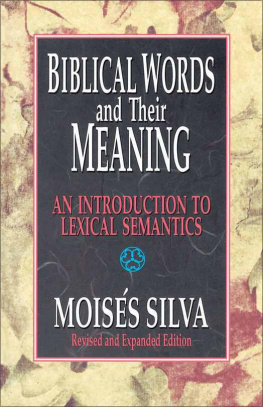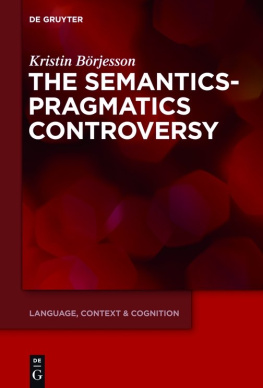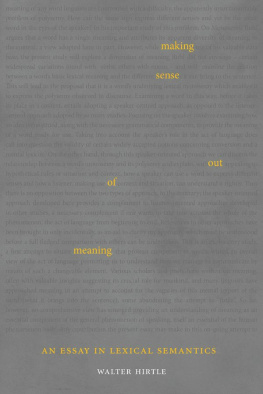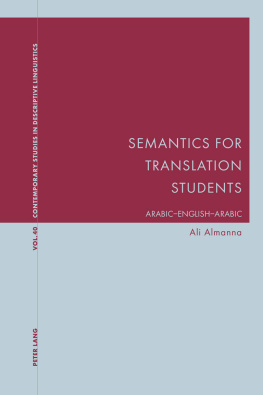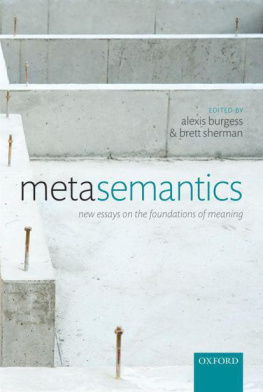Understanding Semantics
Understanding Semantics, Second Edition, provides an engaging and accessible introduction to linguistic semantics. The first part takes the reader through a step-by-step guide to the main phenomena and notions of semantics, covering levels and dimensions of meaning, ambiguity, meaning and context, logical relations and meaning relations, the basics of noun semantics, verb semantics and sentence semantics. The second part provides a critical introduction to the basic notions of the three major theoretical approaches to meaning: structuralism, cognitive semantics and formal semantics.
Key features include:
A consistent mentalist perspective on meaning
Broad coverage of lexical and sentence semantics, including three new chaptersdiscussing deixis, NP semantics, presuppositions, verb semantics and frames
Examples from a wider range of languages that include German, Japanese, Spanish andRussian
Practical exercises on linguistic data
Companion website including all figures and tables from the book, an online dictionary, answers to the exercises and useful links at routledge.com/cw/loebner.
This book is an essential resource for all undergraduate students studying linguistics.
Sebastian Lbner is Professor for general linguistics at the University of Dsseldorf, Germany. His main research interests are linguistic semantics and cognitive linguistics.
Understanding Language series
Series Editors:
Bernard Comrie, Max Planck Institute for Evolutionary Anthropology, Leipzig, Germany Greville Corbett, Surrey Morphology Group, University of Surrey, UK
The Understanding Language series provides approachable, yet authoritative, introductions to major topics in linguistics. Ideal for students with little or no prior knowledge of linguistics, each book carefully explains the basics, emphasising understanding of the essential notions rather than arguing for a particular theoretical position.
Other titles in the series:
Understanding Child Language Acquisition (forthcoming)
Caroline Rowland
Understanding Language Testing
Dan Douglas
Understanding Morphology, Second Edition
Martin Haspelmath and Andrea D. Sims
Understanding Phonetics
Patricia Ashby
Understanding Phonology, Third Edition
Carlos Gussenhoven and Haike Jacobs
Understanding Pragmatics
Jef Verschueren
Understanding Second Language Acquisition
Lourdes Ortega
Understanding Sociolinguistics (forthcoming)
Enam Al-Wer
Understanding Syntax, Third Edition
Maggie Tallerman
For more information on any of these titles, or to order, go to www.routledge.com/linguistics
Understanding
Semantics
Second edition
Sebastian Lbner

First published in Great Britain 2002 by Hodder Arnold, an imprint of Hodder Education
Second edition published 2013
by Routledge
2 Park Square, Milton Park, Abingdon, Oxon, OX14 4RN
Simultaneously published in the USA and Canada
by Routledge
711 Third Avenue, New York, NY 10017
Routledge is an imprint of the Taylor & Francis Group, an informa business
2002, 2013 Sebastian Lbner
The right of Sebastian Lbner to be identified as author of this work has been asserted by him in accordance with sections 77 and 78 of the Copyright, Designs and Patents Act 1988.
All rights reserved. No part of this book may be reprinted or reproduced or utilised in any form or by any electronic, mechanical, or other means, now known or hereafter invented, including photocopying and recording, or in any information storage or retrieval system, without permission in writing from the publishers.
Trademark notice: Product or corporate names may be trademarks or registered trademarks, and are used only for identification and explanation without intent to infringe.
British Library Cataloguing in Publication Data
A catalogue record for this book is available from the British Library
Library of Congress Cataloging in Publication Data
Lbner, Sebastian
Understanding semantics / Sebastian Lbner. -- Second Edition.
pages cm. -- (Understanding language)
Previous edition published under Hodder Education, the second edition is now published under Routledge
after Hodder Education Linguistic titles were acquired in 2012.
Includes bibliographical references and index.
1. Semantics. I. Title.
P325.L567 2013
401.43--dc23
2012048797
ISBN: 978-0-415-82673-0 (hbk)
ISBN: 978-1-4441-2243-5 (pbk)
ISBN: 978-0-203-52833-4 (ebk)
Typeset in 11 on 12pt Minion
by Phoenix Photosetting, Chatham, Kent
Contents
As for many others, my entrance into semantics was formal semantics, about forty years ago. At present, this is still the standard approach in many linguistics departments around the world. Working in the feld of semantics my entire academic life, my conviction has grown that formal semantics is not the ideal framework for working ones way into the rich and fascinating reality of natural language meaning. The perspectives allowed by the formal apparatus developed in formal semantics are far too restrictive. And the aspects of meaning and the semantic phenomena that are neglected, or are simply problematic to deal with, are far too numerous. Above all, formal semantics has little to say about lexical meaning which, after all, provides the ultimate basis of all linguistic meaning and, not by chance, it fails to connect semantic theory to cognition.
In Understanding Semantics, I have taken a different approach. It is driven by the idea that students of semantics should frst grasp the level of meaning which linguistic semantics aims to describe and how this level is related to higher levels of interpretation; they should learn that there are different dimensions of meaning, in addition to descriptive meaning; they should know about ambiguity and about the existence of meaning shifts that interfere with lexical meaning; they should get a notion of the rich inventory of indexical means of expression including deixis, determination and presupposition carriers; they should learn the basics of lexical semantics of nouns and verbs; they should know that there are different theoretical approaches to meaning; and they should get a notion of the fact that linguistic meaning is ultimately a matter of conceptualizing the things we talk about: when we put things into words, we are not just giving a one-to-one mapping of what the world is like we make a choice by putting things in the particular way we do. Meaning is not just a matter of logical relations and truth conditions. As to sentential meaning, the students need to know about the basic semantic functions of NP determination and the verbal categories of aspect and tense, and they should know the basics of predication. All this should be discussed from a perspective that also takes a look at other languages. On this complex background, the more advanced students may start to work their arduous way into the theory and technicalities of formal semantics. In order to give an idea of the basic notions of this approach, the book offers a substantial basic introduction in the last chapter, and a critique.
The second edition of Understanding Semantics is not only a more up-to-date version of the frst edition, but is supplied with new sections that considerably broaden the coverage of the feld. These include:
)
deixis and demonstratives ()
presuppositions ()
Next page

